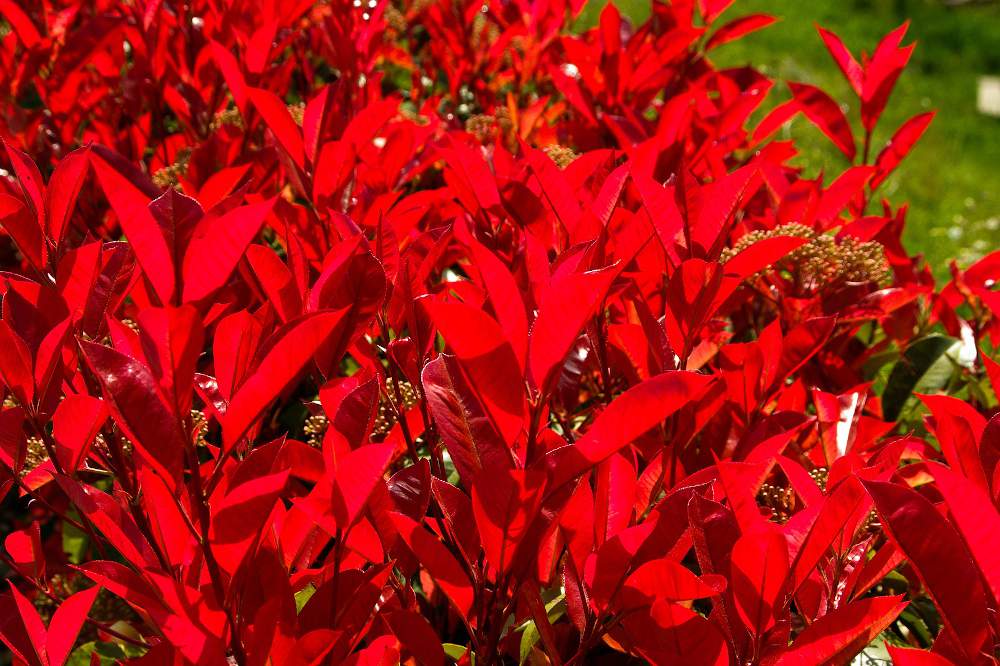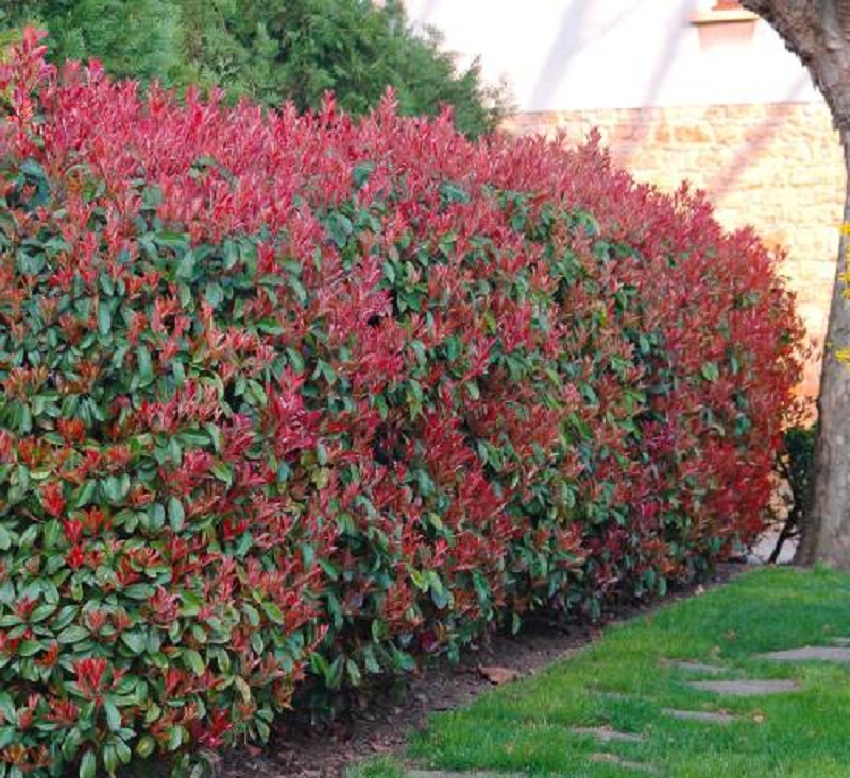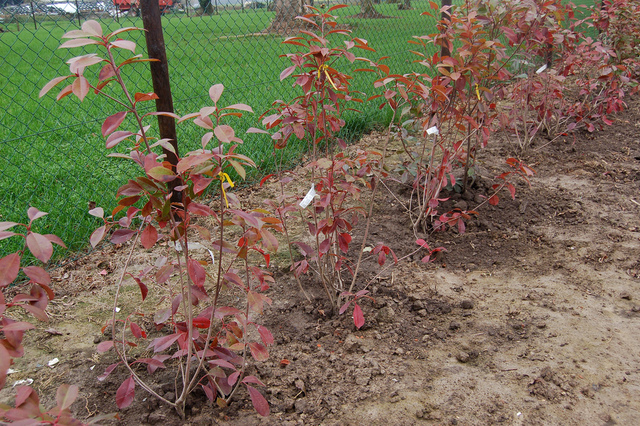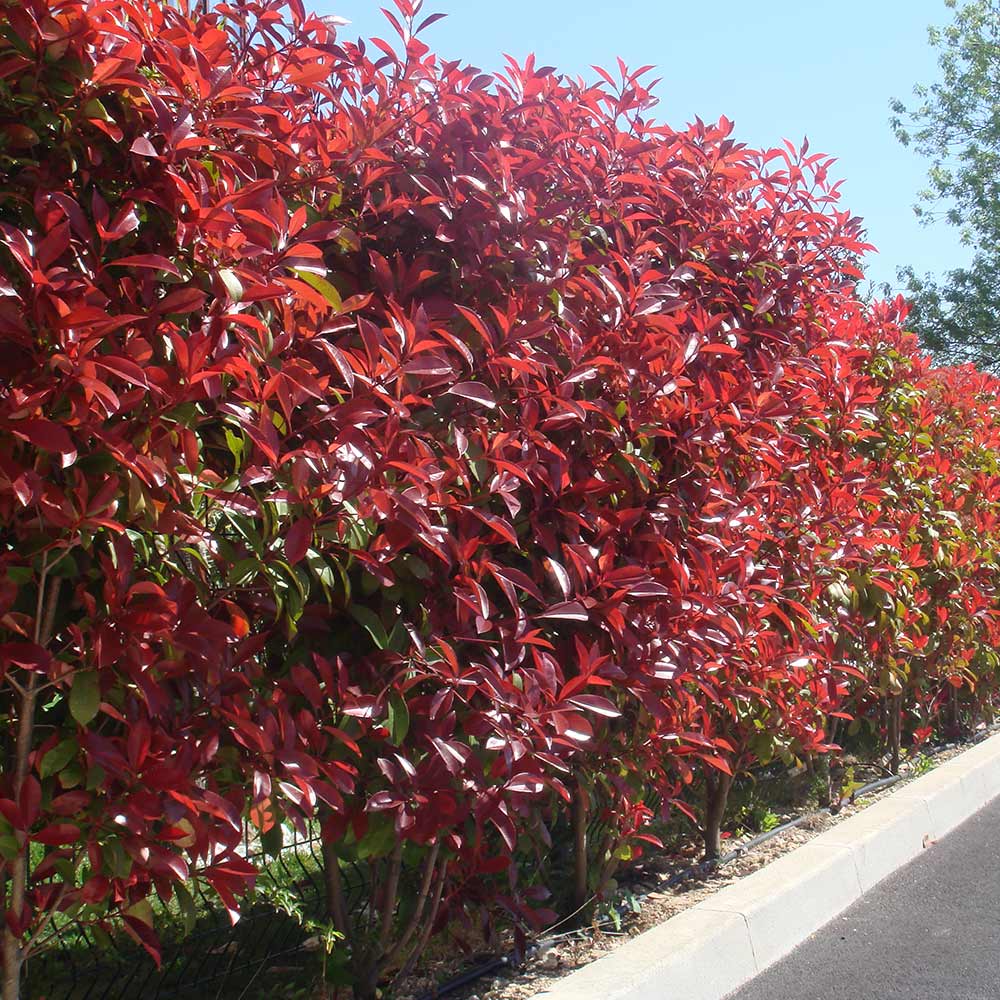Table of Contents
The fantastic characteristic of red-colored foliage shrubs is that everyone can recognize them or feel attracted to them from a distance. Photinia Red Robin is no different and another shrub with the same characteristics. Photinia shrub grows red foilage that is smaller in size and vibrant in appearance.
The white flowers quickly reach the booming stage, making them popular and recognizable for their incredible features. If you also want to bring them indoors or in your gardening, you might struggle with sufficient distance and other maintenance-related things for their growth.
No worries. We have compiled this post to help you understand more about the Photinia red robin plants’ growth, distance, and when to prune red robins.
So keep reading if you want to know more about the distance plantation photinia red robin.
Overview of Photinia Red Robin

This Red Robin is also commonly known as the Fraser Photinia. This is an evergreen shrub that blooms with small red-colored foliage and white flowers. When it comes to appearance, the leaves of this shrub are broader, colorful, and evergreen. This plant belongs to the family Rosaceae. This shrub is used as an ornamental plant in gardening, visitor parks, and several places where clients or people need ornamental natural beauty for the long term.
The shrub blooms to full glory during the April to May months, and the flowers are vibrant and showy with a sweet fragrance. This shrub grows vertically and horizontally to 9 to 12 feet after a certain time.
Red robin is native to the Asia region, and it is considered toxic for horses. This shrub can tolerate the dry conditions of soil and environment, so the water requirement and the maintenance are medium for Red Robin. When it comes to sunlight exposure, this plant needs partial shade to full sunlight exposure for growth.
Requirement of Distancing and Guidelines

Sufficient growth, photosynthesis, and enough distancing are required for the red-robin plantation. This will help the Red Robin to grow and develop its branches quickly and to their full extent. When you give enough space to the red-robin plantation, there are several benefits. The leaves will get enough air and sunlight for their essential photosynthesis process. This will help the Red Robin plant to continue its growth, develop its roots, and get full development so that it can become ready for the budding, blooming, and fruit-giving stages quickly. The full sun exposure will help the red robin plant to get its full high and widespread bushes quicker.
So when it is about the distance guidelines, it covers how much distance should be there between the two individual red robins shrubs.
- Photinia red robin plants need at least five feet of distance between them to grow and spread to their best extent.
- For the hedges, if you are concerned about the intensity and density of the red robin plant, focus on the slightly closer plantation, and it should not be less than 3 feet. Ensure that you maintain it at least in a row. And if you want to grow another row for the hedges formation, try to keep the distance from 5 to 7 feet apart between the two red robin plants.
These plants also need annual pruning for better sunlight exposure and air flow space. The maintenance and pruning are a must and should be more frequent for the hedges. The more distance you will keep, the easier it will be for the health and development of the red robin plants. And you can prune and take care of them easily by avoiding unnecessary efforts.
Plantation of Red Robin and Hedges

There are three ways to plant red Robin shrubs. You can sow the seeds or take the smaller red robins from the nursery. And if you can’t wait, the propagating technique might be better for you, where you don’t have to take care of the initial stages.
1. Nursery Plants
The plants you will take from the nursery will also need attention and special care, at least until they grow fully and become mature. Those smaller nursery plants can be planted in pots or directly in the soil, where they can get a suitable environment for growth.
For the colder areas, they will need sheltered space where they don’t get direct chilling wind attacks. At the same time, they can get sufficient sunlight for growth and development.
2. Seed Plantation
If you want to plant them from scratch, then you will need the Phitnial Red Robin seeds. You can buy them online or from the nearest shops. Once you sow the seeds, you have to wait for a certain period, where they will break the dormancy phase and start germinating.
Once they become sufficient and get at least two leaves on the budding plant, you can plant them like those brought from the nursery.
3. Cutting and Propagating Photinia Red Robin
If you are looking for the easiest way to plant the red robin, either for the individual or for the hedges, cutting and propagating them will work better. For this, you must take several cuts from the healthy branches of the Photinia red robin shrub. Each cutting can be around 6 to 10 inches. Ensure that each red Robin cutting gets at least 3 nodes for the growth.
Sow these cuttings in the pits or directly in the garden sand by removing the leaves from the lower part of the cuttings that will go into the sand. Make the soil and environment suitable for their growth by taking sufficient care of maintenance, soil, fertilization, water, and sunlight. They will start growing sooner, and soon, you will be able to see the individual bushes or hedges of red robin plants,
Final Thoughts
If you are serious about the growth and blooming of the Photinia Red Robin, giving more attention during the plantation of shrubs is crucial. This will help you to maintain the Red Robin plants easily, and these plants will get sufficient space to spread their branches and show the glory of their full blooming when the time comes.
This post showed you the distance needed between the Photinia individual saplings and budding plants during the plantation of Photinia red robin. If you want more ways to add value to a home’s garden or flowering elegance, sign up and get our best strategies sent to your inbox.





